
Watch short for this article (5 slides)
Folklore vs. Forecast: Can Animals Truly Predict the Weather? Unpacking the Science Behind Ancient Beliefs
For millennia, long before satellites scanned the skies and sophisticated algorithms crunched atmospheric data, humans relied on keen observation of the natural world to anticipate weather changes. Folklore across cultures is rich with tales of animals acting as living barometers: cows reclining before rain, birds flying low ahead of a storm, or frogs chorusing with unusual fervor. These beliefs, born from generations of close contact with nature, often seem uncanny. But in an age of advanced meteorology, how much truth resides in these traditional accounts? Let's delve into the fascinating intersection of age-old wisdom and modern scientific understanding to explore how animals genuinely sense and react to their atmospheric environment.
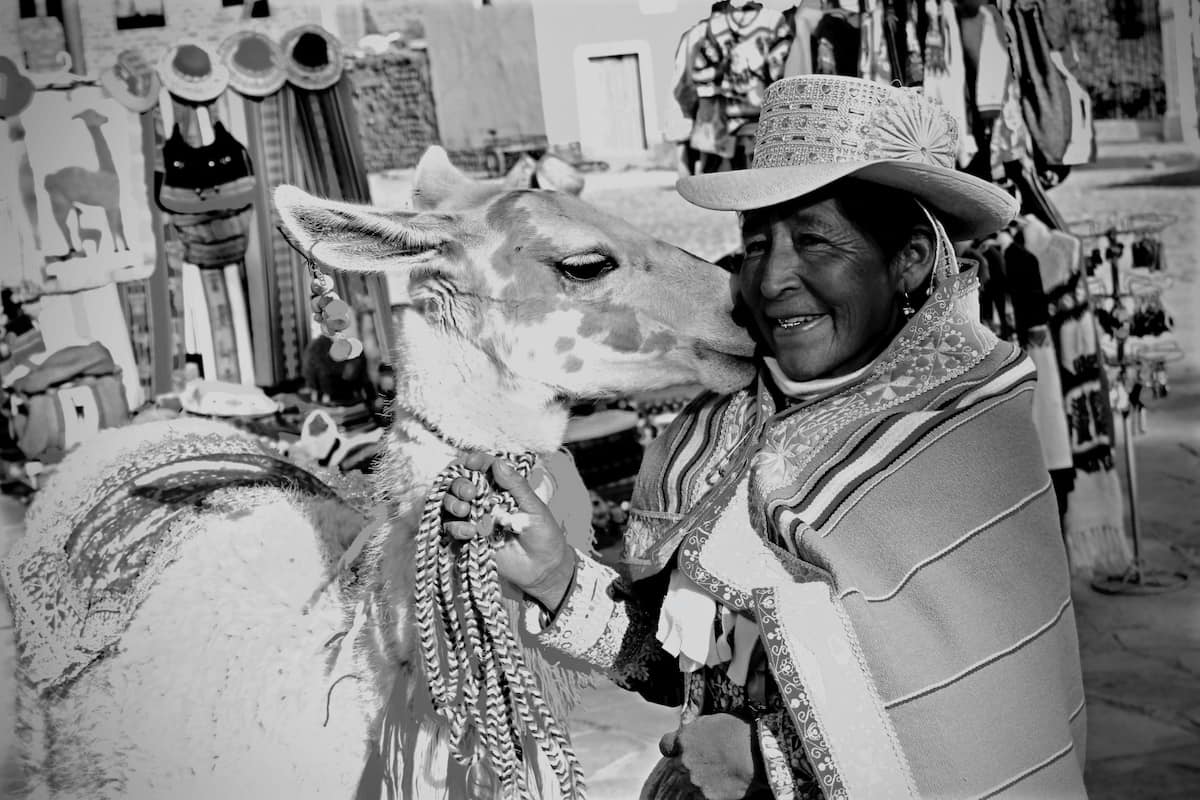
Photo by ale Bellido on Unsplash
Unveiling the Mechanisms: How Animals Sense Atmospheric Shifts
Animals don't possess crystal balls or consciously analyze weather maps. Instead, evolution has equipped many species with highly specialized senses capable of detecting subtle environmental cues that often precede noticeable weather changes. Understanding these mechanisms is key to discerning fact from fiction.
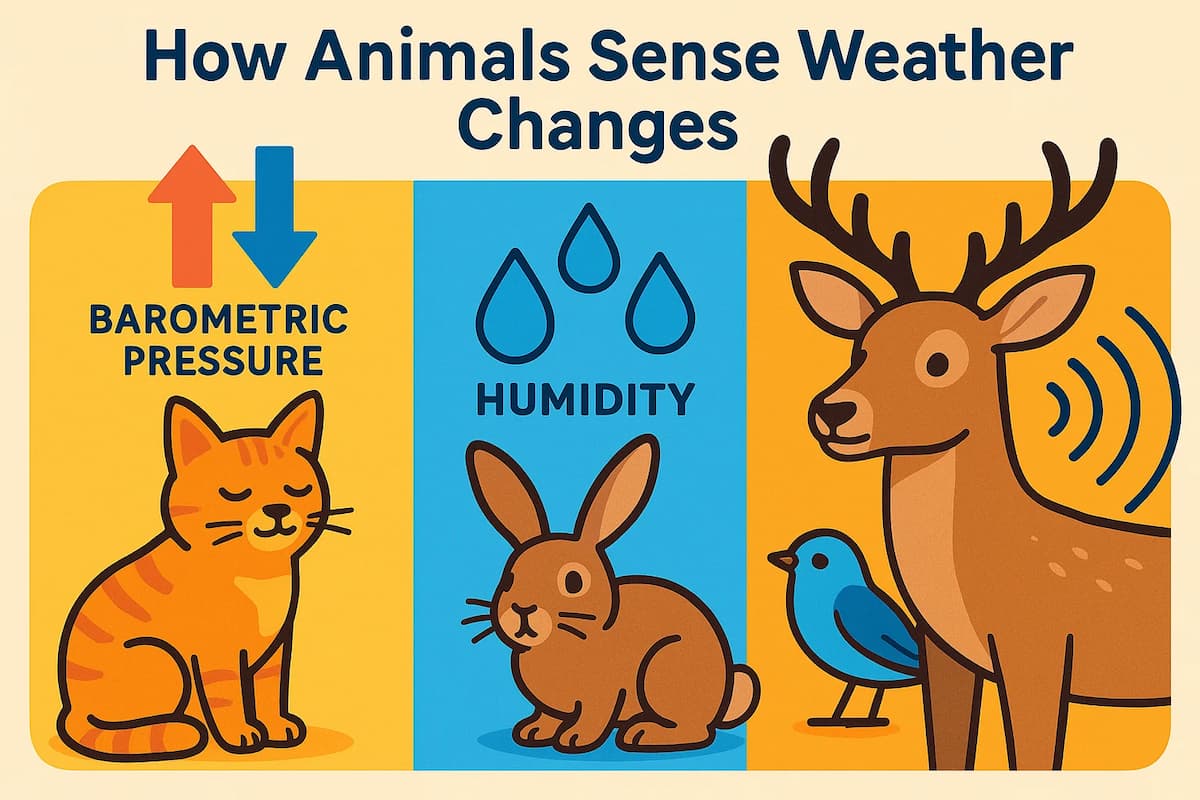
Barometric Pressure Sensitivity (Baroception)
Perhaps the most significant factor is the ability to sense changes in atmospheric pressure. Barometric pressure often drops as a storm system approaches (a drop of 10-20 millibars or hPa can signal significant weather). While humans might only notice drastic changes (perhaps feeling joint aches), many animals are far more attuned:
- Birds: Possess remarkable sensitivity, likely linked to structures in their middle ear similar to the Vitali organ. Detecting pressure drops helps them gauge altitude for efficient flight and potentially anticipate storms that could make flying hazardous or disrupt food sources. (Source: Audubon - Bird Weather Prediction)
- Insects: Many insects, including bees, exhibit behavioral changes correlated with pressure drops. They may reduce foraging activity or return to shelter. The exact mechanism is still studied but likely involves specialized sensory organs.
- Fish & Sharks: Possess lateral lines and sensitive inner ears capable of detecting minute pressure changes in water, which are influenced by atmospheric pressure. This helps them adjust depth and may signal approaching storms, prompting sharks, for example, to move to deeper, calmer waters. (Source: Journal of Experimental Biology - Shark Hurricane Response Study)
Humidity and Temperature Detection
Changes in moisture and temperature are direct indicators of shifting weather patterns:
- Amphibians (Frogs, Toads): Their permeable skin is highly sensitive to humidity levels. Increased humidity, common before and during rain, creates optimal conditions for their activity (preventing dehydration, increasing insect prey availability). Their vocalizations often increase in these favorable conditions.
- Insects: Humidity affects insect flight, scent detection, and survival. Changes can trigger altered behaviors, such as seeking shelter or increased activity.
- Mammals & Birds: While less direct than pressure sensitivity for prediction, animals certainly react to temperature shifts by seeking shade/sun, altering activity times, or huddling for warmth (as seen in sheep).
Infrasound Perception
Some animals can hear sounds far below the range of human hearing (below 20 Hz). These low-frequency sounds, known as infrasound, travel vast distances and are generated by various natural phenomena, including severe storms, volcanic eruptions, and earthquakes.
- Elephants: Are renowned for their ability to detect infrasound generated by distant thunderstorms (potentially over 100 miles or 160 km away). This may help them locate rain sources in arid environments. (Source: Cornell Elephant Listening Project - Infrasound)
- Other Species: Whales, rhinoceroses, and even some birds (like pigeons) are known or suspected to detect infrasound, potentially using it for long-range communication or environmental monitoring.
Revisiting Folklore: Separating Correlation from Causation
With a scientific understanding of animal senses, let's re-examine popular folklore tales:
Folklore: Cows Lying Down Before Rain
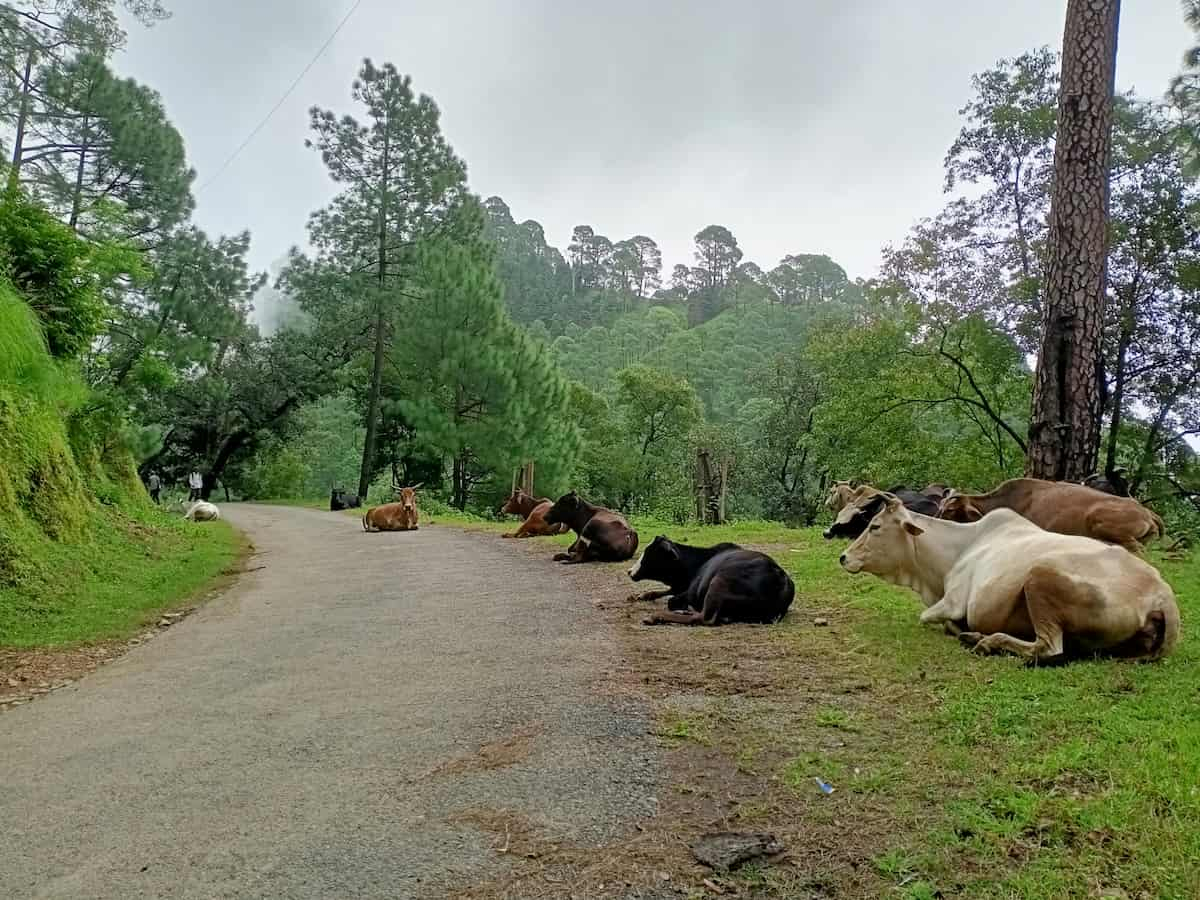
Photo by abhi shek on Unsplash
- The Claim: Cows lie down to keep a patch of grass dry or protect udders.
- Scientific Reality: This is largely considered a myth with little robust scientific backing. Cows lie down frequently for various reasons: resting, ruminating (chewing cud), thermoregulation (cooling down in heat or conserving warmth in cold). While they might seek shelter or huddle before severe weather, simply lying down is not a reliable indicator of impending rain. Their behavior is far more complex than this simple correlation suggests. A large group lying down might correlate more with satiation or time of day than imminent precipitation.
Folklore: Birds Flying Low Before a Storm
- The Claim: Lower air pressure makes high flight difficult.
- Scientific Reality: There's a kernel of truth here. Dropping barometric pressure does slightly decrease air density, potentially making high-altitude flight more energetically demanding for birds. Their proven sensitivity to pressure changes means they *can* detect these shifts. Therefore, flying lower might be a response. However, birds also fly low to forage for insects disturbed by changing conditions, to avoid high winds aloft, or due to fog/low clouds. So, while plausible, it's not an absolute predictor – low-flying birds occur without subsequent storms.
Folklore: Frogs Croaking Louder Before Rain
- The Claim: Frogs are "singing for rain" or preparing for humidity.
- Scientific Reality: This aligns well with scientific understanding. Frogs don't predict rain, but they respond positively to the conditions that often precede it – namely, increased humidity and often warmer temperatures. These conditions are ideal for amphibian activity (preventing dehydration, mating, feeding on active insects). So, increased croaking signifies favorable current conditions, which very often coincide with imminent or ongoing rainfall. They are celebrating the arrival of suitable weather, not forecasting it.
Folklore: Sheep Huddling Together Before Bad Weather
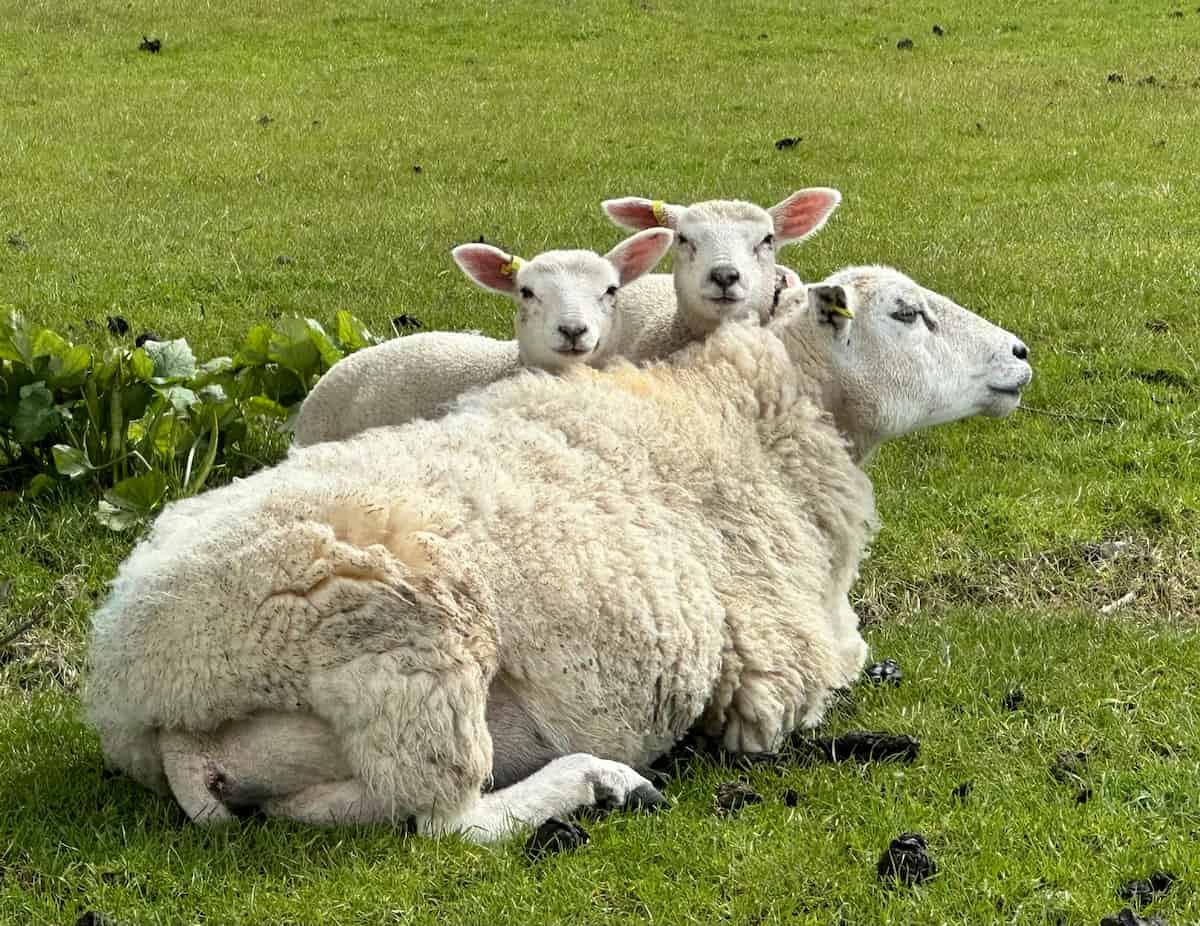
Photo by Sally Prendergast on Unsplash
- The Claim: Sheep sense bad weather and group for protection.
- Scientific Reality: Sheep huddle primarily for thermoregulation (staying warm in cold, wind, or rain) and for social/anti-predator reasons. Since bad weather often involves cold temperatures and wind, huddling will frequently occur before or during storms. However, they will also huddle on a cold, clear day or if feeling threatened. It's a general response to discomfort or perceived danger, not a specific weather prediction tool, although it often correlates.
Beyond the Barnyard: Verified Animal Weather Sensitivities
Science confirms remarkable weather-sensing abilities in various species beyond common folklore:
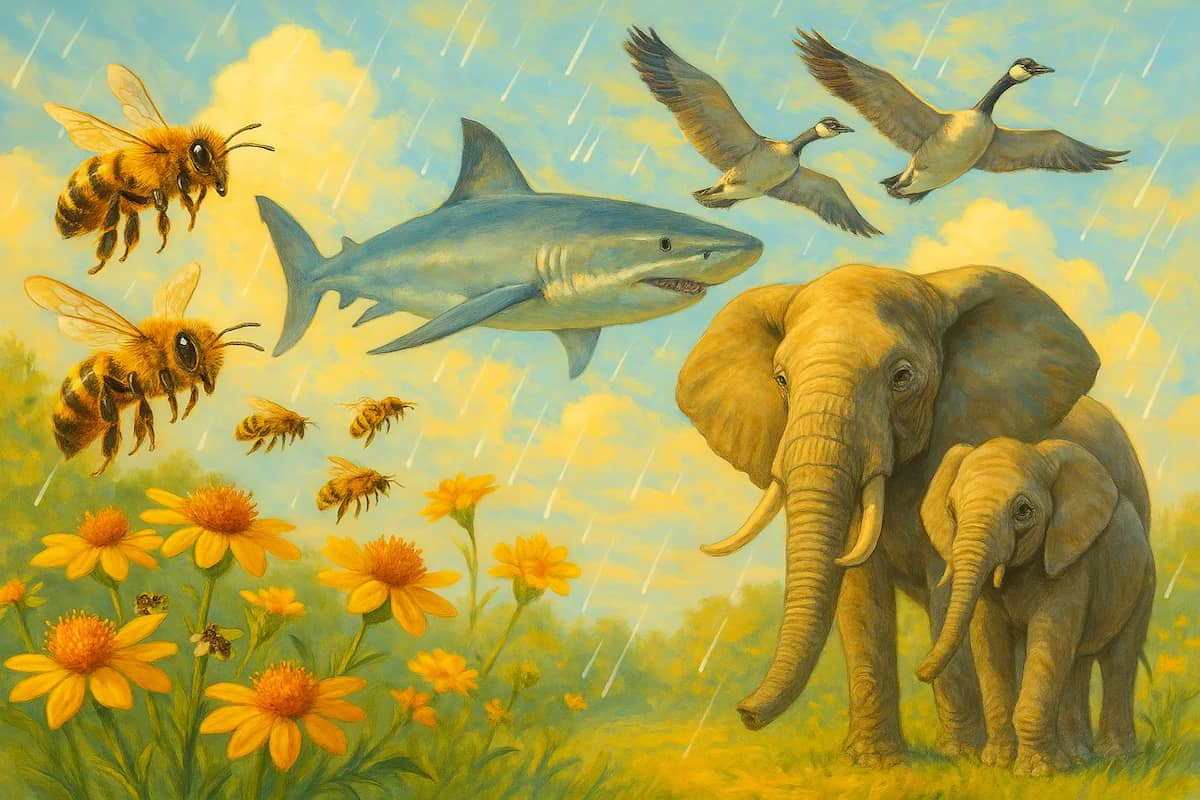
- Bees Heading Home: Apiculturists often observe bees returning en masse to their hives well before a storm breaks. Research suggests they respond to dropping barometric pressure, changing humidity, and potentially shifts in the electrical charge of the atmosphere, ensuring the colony's safety.
- Sharks Seeking Depth: Studies tracking sharks during hurricanes have shown they often move into deeper water hours or even days before the storm hits landfall. This behavior is strongly linked to their ability to detect the significant drop in barometric pressure associated with major storms, allowing them to escape the dangerous turbulence of surface waters.
- Elephants Tracking Storms: As mentioned, the documented ability of elephants to detect infrasound from distant storms is a scientifically validated example of long-range weather sensing, crucial for survival in environments where water is scarce.
- Migratory Marvels: Many birds undertaking long migrations rely heavily on sensing barometric pressure systems and wind patterns to navigate efficiently and avoid hazardous weather fronts, demonstrating an innate, large-scale weather awareness.
Myth, Reality, and the Value of Observation
"Animals react to their environment based on sensory input that we may not perceive. They aren't predicting the future in a cognitive sense, but their evolved responses to immediate cues like pressure drops or humidity changes can certainly appear predictive to human observers."
The key distinction lies between prediction (consciously forecasting future events) and reaction (responding to current environmental stimuli). Animals excel at the latter. Their behaviors, honed by natural selection, are survival mechanisms triggered by subtle, immediate changes that often precede more dramatic weather shifts.
Does this invalidate centuries of human observation? Not entirely. Experienced farmers, sailors, and outdoor enthusiasts often develop a keen sense of local weather patterns by observing animal behavior in context alongside other signs like cloud formations and wind direction. While a single cow lying down means little, a combination of factors – perhaps birds flying low, cattle seeking shelter, and a specific feel in the air – might collectively suggest an impending change based on localized experience.
Conclusion: Honoring Nature's Wisdom and Scientific Insight
The enduring folklore surrounding animals and weather prediction speaks to our innate connection with the natural world and our historical reliance on its cues. While science often debunks the more simplistic interpretations, it simultaneously reveals the truly astonishing sensory capabilities animals possess – detecting pressure shifts, humidity nuances, and even the subsonic rumble of distant storms.

Photo by Pier Averara on Unsplash
Rather than pitting folklore against science, we gain a richer appreciation by understanding both. Traditional knowledge often captured real correlations, while science explains the underlying biological mechanisms. Observing animal behavior can still offer clues about our immediate environment, reminding us that these creatures are intricately tuned to atmospheric forces in ways we are still striving to fully comprehend. The next time you notice unusual animal activity before a weather change, appreciate it not as magic, but as a testament to the remarkable sensory world of the creatures we share our planet with.